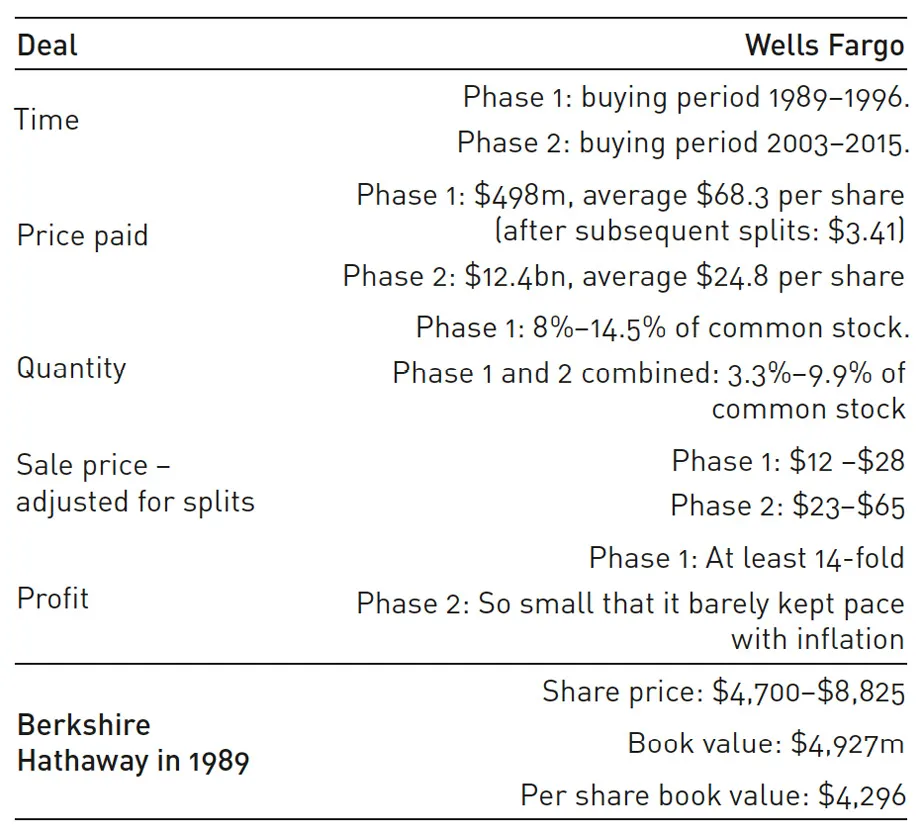
- English
- ePUB (mobile friendly)
- Available on iOS & Android
About this book
In this third volume of The Deals of Warren Buffett, we trace Warren Buffett's journey as he made Berkshire Hathaway the largest company in America. When we left Buffett at the end of Volume 2, he had reached a fortune of $1bn. In this enthralling next instalment, we follow Buffett's investment deals over the decade from 1989 to 1998, as Berkshire shares jumped 14-fold from $4, 700 to $68, 000 and its market cap grew from $5bn to $100bn.This was a period of Buffett's career when he was approaching normal retirement age. But far from slowing down, he was just hitting his stride. Buffett was as driven as ever to seek out great companies at good prices. By studying the decision-making that went into his investment deals, and the successful and unsuccessful outcomes, we can learn from Buffett and become better investors ourselves.In this decade, Buffett made investments in the following companies: Wells Fargo, USAir, American Express, The Shoe Group, Helzberg Diamond Shops, RC Willey, FlightSafety International, Dairy Queen, NetJets, and General Re.For each of these deals, investing expert and Buffett historian Glen Arnold dives into unprecedented detail to analyse the investment process and the stories of the individuals involved. Arnold's engaging, lucid style transports the reader to the time and place of the deals, to truly appreciate how Buffett was operating.With stories and analysis drawn from decades of investing experience, join Glen Arnold and delve deeper into The Deals of Warren Buffett!
Frequently asked questions
- Essential is ideal for learners and professionals who enjoy exploring a wide range of subjects. Access the Essential Library with 800,000+ trusted titles and best-sellers across business, personal growth, and the humanities. Includes unlimited reading time and Standard Read Aloud voice.
- Complete: Perfect for advanced learners and researchers needing full, unrestricted access. Unlock 1.4M+ books across hundreds of subjects, including academic and specialized titles. The Complete Plan also includes advanced features like Premium Read Aloud and Research Assistant.
Please note we cannot support devices running on iOS 13 and Android 7 or earlier. Learn more about using the app.
Information

Table of contents
- Contents
- About The Author
- Acknowledgements
- The Origins Of This Book Series
- Preface
- Investment 1: Wells Fargo
- Investment 2: USAir
- Investment 3: American Express
- Investment 4: The Shoe Group – H. H. Brown, Lowell, Dexter
- Investment 5: Helzberg Diamond Shops
- Investment 6: R.C. Willey
- Investment 7: FlightSafety International
- Investment 8: Dairy Queen
- Investment 9: NetJets
- Investment 10: General Re
- A distance travelled
- Publishing details